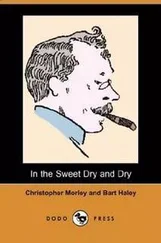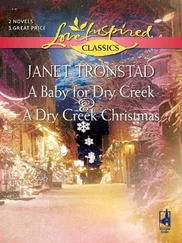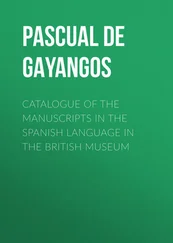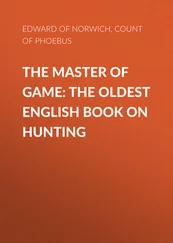Scratched glosses are hard enough to read even in favourable circumstances. In the past those in CCCC manuscripts have been rendered more troublesome by the firmness with which, until later and more degenerate times, the college authorities resisted innovation. Only comparatively recently did electricity dispel the library’s darkness: earlier readers had to make the best of such natural light as the fenland day afforded. […] If I read more than [H.D. Meritt] did it is because I have more opportunity for leisured study of the manuscript and better lighting conditions for the glosses. (Page 1973: 210)
Page noticed the difference in working conditions quite markedly while working on Cambridge, UL Kk. 3. 21 [11/K:24] as a guest in the University Library: “the diffused light of the University Library manuscript room is unhelpful to this type of research” (Page 1981a: 110). Surely, the fact that he was not at liberty to choose his working conditions in the neighbouring library played an important role in that verdict.
Secondly, his intimate knowledge of Anglo-Saxon runic inscriptions provided a great awareness of visual issues surrounding deformational writing. His acclaimed introductory study on Anglo-Saxon runology, Introduction to English Runes , appeared just about the same time he started to work on OE dry-point glosses (i.e. Page 1999 [2 nded.], 1 sted. 1973), so his eyesight must have been in peak shape. Such training is quite essential, especially for faint dry-point material, where the eyes have to distinguish between relevant structures (such as letter forms) and irrelevant structures (i.e. parchment surface itself).
Over a period of some ten years, Page edited dry-point glosses from eight Cambridge MSS and one British Library MS, of which I can only give a short overview here.
(i) Page’s first edition of 1973 presents 121 previously undocumented glosses from Cambridge, CCC 173Cambridge, Corpus Christi CollegeMS 173 [4/K:40] and makes a number of comments on Meritt’s (1936) and (1945) editions of the glosses in that MS.
(ii) Page’s second (1975a) dry-point gloss contribution is hidden in an article, in which Page expounds on several points of criticism about the DOE’ s preparations and editorial decisions as presented in Cameron et al. (1970) and Frank et al. (1973). By way of arguing that editions ought to be brought to modern standards before the work on the DOE should proceed, Page also briefly touches upon the subject of OE dry-point glosses and presents a small group of previously unedited OE dry-point glosses from Cambridge, CCC 285Cambridge, Corpus Christi CollegeMS 285 [6/K:54].
(iii) Page (1975b) edits 180 dry-point glosses from Cambridge, CCC 326Cambridge, Corpus Christi CollegeMS 326 [7/K:61] as an addition to those edited by Napier (1900) and Meritt (1945).
(iv) Page (1979) edits OE dry-point glosses from Cambridge, CCC 57Cambridge, Corpus Christi CollegeMS 57 [3/K:34], CCC 173Cambridge, Corpus Christi CollegeMS 173 [4/K:40] and CCC 223Cambridge, Corpus Christi CollegeMS 223 [5/K:52]. He also discusses the discipline of OE gloss studies, and in comparing it to OHG gloss studies tries to show that OE gloss scholars are comparatively unenterprising compared against the “adventurous” (Page 1979: 27) OHG gloss scholars.
(v) In Page (1981a), the focus lies on MSS outside the Parker Library, and Page edits dry-point glosses from Cambridge, Trinity College Library O. 2. 30Cambridge, Trinity College LibraryO. 2. 30 [9/K:94] and O. 2. 31Cambridge, Trinity College LibraryO. 2. 31 [10/K:95], Cambridge, UL Kk. 3. 21Cambridge, University LibraryKk. 3. 21 [11/K:24] and London, BL Cotton Vespasian D. xiv, ff. 170–224London, British LibraryCotton Vespasian D. xiv [18/K:210]. Referring to Page (1975a), Page (1981a: 105) explains that he had picked these four MSS to demonstrate that more texts were unprinted than the editors of the DOE project had allowed for. From all four MSS OE dry-point glosses had been previously edited (in Napier 1900, Meritt 1945, Ker 1957 and Meritt 1961) and Page manages to add another 35 OE dry-point glosses, some of them only partially decipherable, though.
(vi) Page (1982) adds a few readings to his (1973) edition of OE dry-point glosses in Cambridge, CCC 173 [4/K:40] and concludes with “a plea for a more varied approach to Old English glossing” (1982: 160). Ironically, the approach taken in his (1982) edition is rather confusing, even though Page shows that he is keenly aware of the qualities of a good edition. For instance, Page mentions the previous work done on these glosses only indirectly, forcing the reader to collate previous findings to make sense of the edition.
After 1982, Page’s scholarly interests seem to have moved away from editing dry-point glosses, but he addresses more general glossographic topics in two later articles.
(vii) Page (1992) critically discusses the feasibility of a printed corpus of Anglo-Saxon glosses in imitation of StSG and TPH , which are both so central to the study of OHG and OIr glosses, respectively. Page entertains many reservations, among which dry-point glosses and their very specific difficulties feature quite prominently.
(viii) Finally, Page (2001) demonstrates that there is great need for a more varied approach to OE glossing and syntactical marking, and addresses functional and contextual issues that he considers to have been neglected so far in the study of OE glossing. Among other things, Page (2001: 219–228) also discusses the OE dry-point glosses in Cambridge, UL Kk. 3. 21Cambridge, University LibraryKk. 3. 21 [11/K:24].
One cannot help but notice that while Page explicitly considers the list-like representations chosen by Napier and Meritt2 to be inadequate for the complexities offered by the glossing as we encounter it in the MSS (cf. 1979: 28–29), he himself did not succeed in presenting a real alternative to it, adhering himself to L.-OE word-lists in the majority of his editions. Page was definitely interested in experimenting (cf. 1979: 28, n. 5) with new manners of presentations and he was acutely aware of the problems surrounding more abstract ways of presenting the data: “The danger is overkill, if the presentation is so complex that it makes it hard for an individual to find the particular information he is interested in” (Page 1992: 94). His (1979) edition, which deviates most from the conventional list-like representation, however, is very difficult to unravel, and establishing basic facts about this particular edition – such as how many OE dry-point glosses are recorded in it – turns into a time-consuming venture, which he was probably very well aware of: “It is easy enough to criticize existing publications of the Anglo-Saxon glosses, but hard to suggest improvements that can be put into practice” (Page 1982: 154). Furthermore, his own editions do not live up to the standards that he proposes in Page (1992: 85). Yet, Page successfully showed many ways in which the approaches of his “more adventurous” OHG gloss scholar colleagues could be applied to the study of OE glossing.
Конец ознакомительного фрагмента.
Текст предоставлен ООО «ЛитРес».
Прочитайте эту книгу целиком, купив полную легальную версию на ЛитРес.
Безопасно оплатить книгу можно банковской картой Visa, MasterCard, Maestro, со счета мобильного телефона, с платежного терминала, в салоне МТС или Связной, через PayPal, WebMoney, Яндекс.Деньги, QIWI Кошелек, бонусными картами или другим удобным Вам способом.












